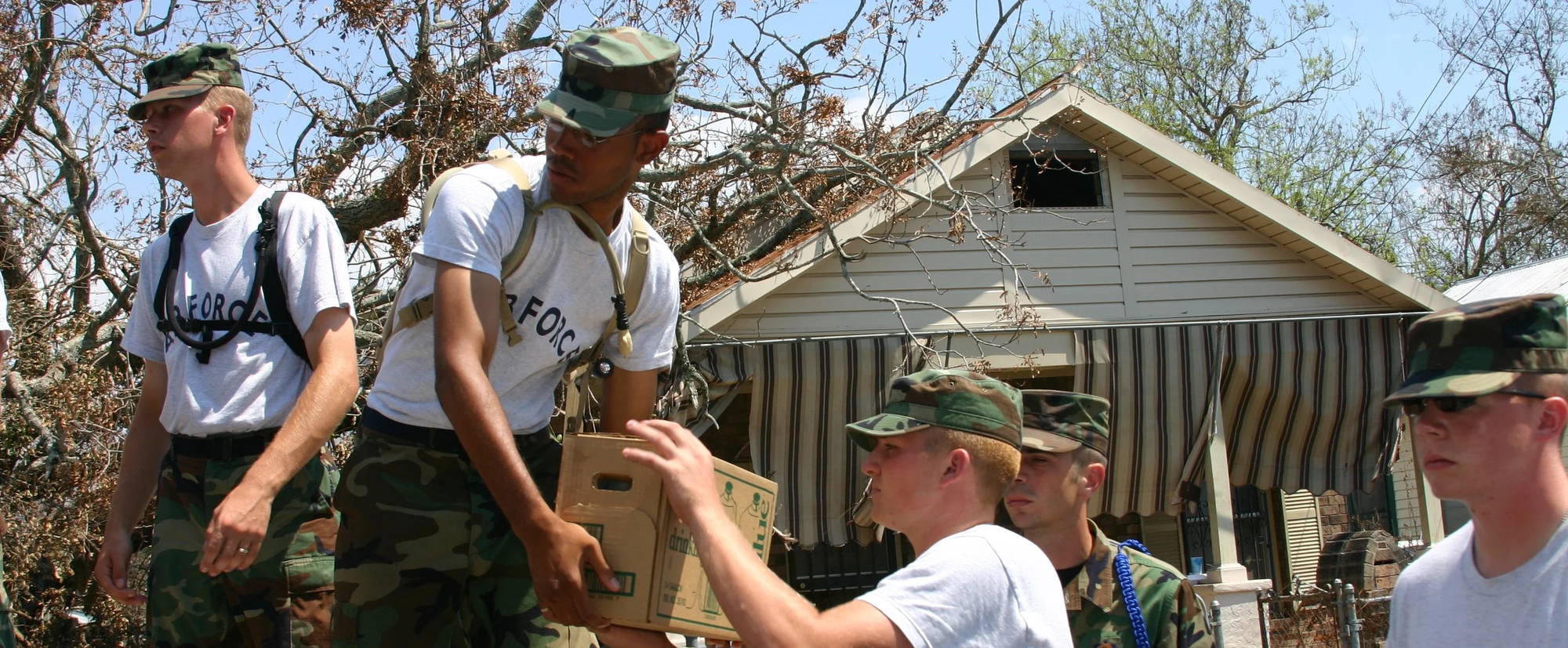Civil-Military Cooperation in Climate-Related Emergencies

As climate emergencies beset communities with increasing frequency and severity, national militaries play a key role, working alongside civilian responders and often facing calls for greater involvement when civilian capacity is strained. Whether militaries should be involved in preparing for and responding to climate emergencies is a matter of considerable debate, and views vary depending on the context, country, political culture, and whether involvement is within national borders or beyond. What is clear, however, is that national militaries are already engaged in these roles and, with the rising number of climate emergencies globally, the pressure for military involvement in such emergencies is also likely to increase when civilian agencies cannot respond at the speed or scale required.
Militaries, with their unique capabilities, are stepping up to fill critical gaps. Their logistical expertise, rapid mobilization capabilities, and experience operating in high-stress environments make them indispensable partners in emergency response efforts. While foundational international guidelines like the Oslo Guidelines traditionally suggested military assets be used as a "last resort," the escalating scale of climate-related emergencies increasingly challenges this principle, leading to a de facto normalization of military involvement.
The project on Climate and Security Action through Civil-Military Cooperation in Climate-Related Emergencies (Project CASA) assesses the nature, extent, and impact of military involvement in such emergencies across a range of countries. It has done so by consulting with government and military officials in countries in NATO and beyond to compile information on their approaches to engaging the military in preparing for and responding to climate emergencies, as well as the impacts this has had on force structure and operations.
The report "Resilience, Readiness, and Response," from Project CASA highlights the increasing and essential role of national militaries in addressing the escalating global climate crisis. The publication serves as both a critical resource and a call to action for policymakers and practitioners grappling with climate-worsened disasters.
Diverse Approaches to Civil-Military Cooperation
The study reveals a wide spectrum of approaches among countries regarding military involvement in climate emergencies.
- Legal and Policy Frameworks: Some countries, like Bangladesh and Sweden, rely on general national disaster frameworks without specific military guidelines, while others, such as Hungary, Ireland, and Italy, have extensive laws and military policies. Belgium, Brazil, Bulgaria, Canada, France, Latvia, Mexico, Romania, Spain, Switzerland, and the United States have robust legal frameworks and military guidelines covering climate change mitigation, adaptation, and disaster response.
- Operational Frameworks: Approaches range from training specialized personnel within regular units (e.g., Romania, Italy, Pakistan) to creating specialized stand-alone units (e.g., France, Spain, Bulgaria, Canada's DART) or engaging the full military (e.g., Bangladesh, Ireland, Sweden). Brazil even utilizes "dual-use" units for both civil protection and general military missions.
- Military Training: Training varies from specific tasks like search and rescue or CBRN hazards for specialized personnel (e.g., Ireland, Latvia) to full-force training on civil protection generally (e.g., Bangladesh, Sweden). Notably, some countries like Canada, France, and Spain maintain permanent training schools for natural hazard response.
- Roles and Responsibilities: Militaries are most often involved in the early stages of emergency response, providing services like firefighting, flood response, and immediate relief, engineering, and security. Civilian agencies typically focus on longer-term processes such as prevention, preparedness, and recovery. However, there is variation in who handles search and rescue, medical assistance, and infrastructure restoration. Many countries emphasize that military engagement is at the request of civilian authorities, maintaining civilian primary responsibility.
- International Coordination: The report identifies wide participation in mechanisms like the EU Emergency Response Coordination Centre, NATO Euro-Atlantic Disaster Response Coordination Centre, and the UN Office for the Coordination of Humanitarian Affairs. Countries like Bangladesh and Pakistan also participate in UN Peacekeeping Operations and regional organizations.
Advantages and Disadvantages of Military Contributions
The report identifies both benefits and drawbacks of significant military involvement in civil protection.
- Rapid Mobilization and Deployment: Militaries can quickly move personnel and equipment to affected areas.
- Logistical and Engineering Capacity: They possess significant resources for transportation, infrastructure repair, and setting up temporary facilities.
- Operating in Austere Conditions: Militaries are trained to function effectively in difficult terrain and high-stress environments.
- Positive Public Perception and Morale: Involvement in disaster response boosts public trust and enhances troop morale.
- Skill Sharpening: These operations offer valuable opportunities to refine core military skills like command and control and interagency coordination in a real-life, non-combat setting.
Disadvantages:
- Diversion from Core Missions: Increased involvement risks undermining the military’s primary responsibility of national defense, potentially diverting resources and personnel.
- Strain on Personnel and Equipment: Frequent deployments can lead to fatigue, stress, and wear and tear on resources.
- Potential for Critical Gaps: Over-reliance on the military could create vulnerabilities if civilian agencies are not adequately prepared to handle major disasters independently.
Civilian agencies offer distinct advantages, including closer ties to local communities, specialized expertise in social services and psychosocial support, and a longer-term perspective focused on prevention, preparedness, and economic development. The report emphasizes the critical role of citizens themselves as the "first line of defense".
Photo: BILOXI, UNITED STATES - Sep 06, 2005: Airmen from Keesler AFB deliver bottled water to Hurricane Katrina victims. Photo from Wirestock Creators. Source: Royality-free stock photo from Shutterstock.com